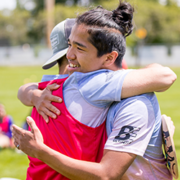Ultimate program creates transformational connection opportunities for Indigenous Participants
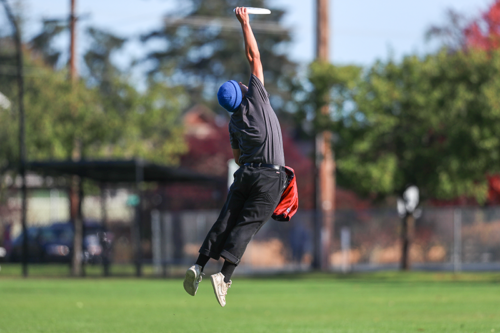 Can a frisbee be a tool for reconciliation?
Can a frisbee be a tool for reconciliation?
When it comes to the Ultimate Spirit program, the organizers’ ambitions go well beyond having a fun time – they also want to build lasting relationships with the Indigenous communities they’re working in and create opportunities for players to be mentored into coaching roles.
“Our vision is to create transformational connections with Indigenous and non-Indigenous communities, with the vehicle being ultimate,” said Jimmy Roney, program coordinator for the BC Ultimate Society.
“We create the connections within the community, and when the trust is built, that community tells another community – gaining trust. That process is so important, because the only way to grow is at the speed of trust.”
Integral to the program’s success, which has been running since 2017, is an Indigenous Long-Term Participant Development (ILTPD) pathway, a resource that acts as a reference for those who work with Indigenous participants in sport and recreation.
The ILTPD pathway has grown out of the understanding that mainstream models for sport development do not necessarily align with Indigenous needs or experiences. It tries to address that gap by outlining the key elements that need to be considered when planning, developing and implementing programs for and with Indigenous Peoples and communities.
Ultimate Spirit incorporates a number of Indigenous cultural practices into its programming. The sharing circles that the organization hosts with their participants are akin to Indigenous sharing circles, and players routinely eat together. Since the competitions bring together Indigenous and non-Indigenous players, cultural sharing is baked into the experience.
Another element of inclusion that is important to Ultimate Spirit is gender equity, as all levels of the program are co-ed.
“This allows for trust and connection to develop between members of different genders and for an understanding of gender equality. The message sent to people when playing mixed gender Ultimate is that individuals of all genders are equal, welcomed and valued,” their website reads.
“Ultimate builds relationships between people in a positive way by removing the gender barrier and focusing on each person as a participant, player and athlete.”
Shaping the next generation
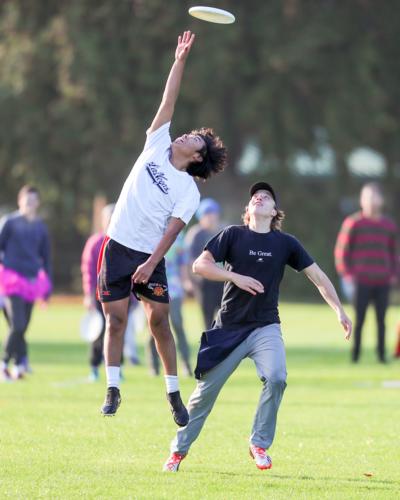
When the COVID-19 pandemic first hit, BC Ultimate did not let their work come to a standstill.
As part of an onboarding process to the ILTPD pathway, they were still able to develop program curriculum based on the work and experience that they were already doing in partnership with I·SPARC and Indigenous communities, tying back into the relationship and trust that had been created prior.
When it came time to host a workshop on ILTPD and discuss the best way to support BC Ultimate and Ultimate Spirit, the organizations were able to jump right into the work. I·SPARC’s Kim Leming, Manager, Participant Pathways & Indigenous Cultural Safety Training, was encouraged by their readiness – they had already passed the initial steps, which meant the could move on to action planning and a focus on getting resources to support coaches.
“A lot of leaders in the sport environment know about Long-Term Development in Sport and Physical Activity (LTD), so the idea was to present the components of ILTPD that relate to the shared history of Canada and Indigenous Peoples,” said Leming.
“The first day consists of awareness pieces around the unseen gaps and barriers that leaders working with Indigenous people haven’t considered before. The ILTPD provides a starting point, identifying where we are and how we can encourage Indigenous people to be active and join sport.”
That requires sport leaders to have an understanding of Indigenous history, communicated through experiential learning.
“Going through the KAIROS Blanket Exercise can be that eye-opening experience. We hope that it can open the eyes and hearts of sport leaders coming to the table. This allows them to have a small glimpse and understand why some Indigenous participants may not be engaged in their programming or sport. We can then begin conversations and work on the action plan and follow-up with mentorship..”
Lasting connection and long-term impact
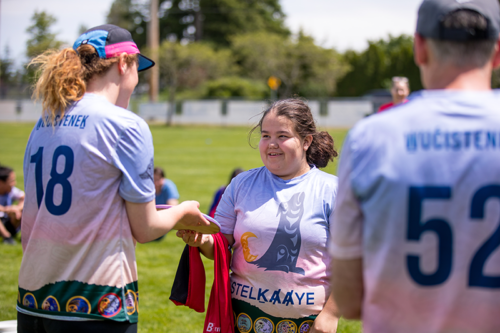
Creating the lasting change that Ultimate Spirit strives for requires more profound engagement than some sport organizations are prepared for, according to Leming.
“It’s important to have Indigenous participants as part of your program. We’ve seen helicopter programs that come in for one or two weeks, but then they leave the community and often leave it with no options to sustain the program. We are encouraging PSOs to create sustainable community-based programs and developing trust with the community takes time. It’s an ongoing process. It’s not about checking a box,” she said.
“We see the potential with BC Ultimate for that lasting connection and long-term impact.”
Work is first done at the PSO level, so it’s those leaders that can make the systemic change within the system.
“The PSO is also doing the work with their spheres of influence, so Indigenous participation is happening at all levels within their organization, including coaches, officials, athletes, etc. This is what I would consider doing the work of reconciliation—using sport as the vehicle to drive social and systemic changes,” she said.
“This work that PSOs like BC Ultimate undergo in B.C. is important and can be life-changing.”
A self-sustaining program
The work to achieve Indigenous inclusion is being done by multiple sport organizations, but, according to Sport for Life’s Mataya Jim, the Manager of Indigenous Initiatives, BC Ultimate and Ultimate Spirit stand out from the rest – thanks in large part to Jimmy Roney’s influence.
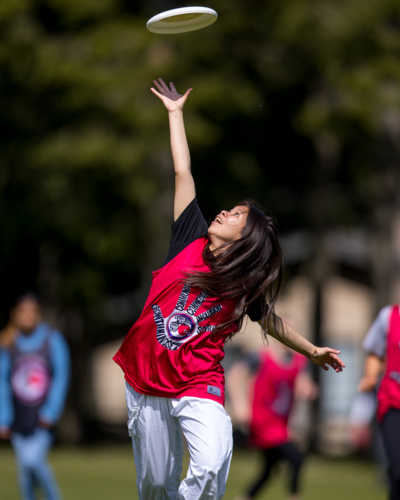 “Following the ILTPD workshop, we’ve done mentor sessions with representatives from Ultimate, Sport for Life and I·SPARC where we work together and create a focus for implementing ILTPD within the sport. For BC Ultimate, we put together the coaches’ onboarding piece,” she said.
“Following the ILTPD workshop, we’ve done mentor sessions with representatives from Ultimate, Sport for Life and I·SPARC where we work together and create a focus for implementing ILTPD within the sport. For BC Ultimate, we put together the coaches’ onboarding piece,” she said.
“BC Ultimate’s engagement and relationship within the community equips them with the tools to co-create a kind of Indigenous-owned program that is self-sustaining and run in community. The ILTPD process builds the roadmap for implementing the tools that BC Ultimate had on hand.”
Roney was pleased that the ILTPD workshop attracted representatives from the Vancouver Ultimate League and BC Ultimate alongside members of Ultimate Spirit. There were approximately 20 people in attendance and he said the experience “really shaped our program”.
BC Ultimate has also created three resources including a community program guide that introduces readers to the program, and two PDFs called Fun with Flying Discs and Intro to Basics – Self & Team Identity. These resources are based on their five pillar values, with ties to Indigenous language. The five pillars of growth mindset, community, connection, inclusion and spirit are emblazoned on all participants’ jerseys. According to Alex Wilson, Senior Manager of Strategic Initiatives at Sport for Life, this is a crucial part of their success.
“Parents see those jerseys around the community and it shows pride in their culture and their community. BC Ultimate has lofty goals to support a presence for an Indigenous pathway through sport in the province,” she said.
“It’s about more than sport; it’s about providing something to the community and supporting reconciliation in ways that other sports aren’t.”
Allyship and antiracism
As of December 2022, the work to incorporate the scheduled mentorship with BC Ultimate is complete, but this is just the beginning for the players. It has already resulted in elite non-Indigenous players travelling to a community gathering in Lil’wat Nation (near Pemberton), where the community prepared a barbecue for everyone on their territory. The team has also facilitated the translation of ultimate terms into Indigenous languages. For Roney, the work is ongoing.
“We feel it’s so important for anyone coming into the program to have a deeper understanding and to have a focus on antiracism, cultural humility and allyship. We’ve piloted this work with University of Victoria (UVic) varsity ultimate teams, and the W̱SÁNEĆ community, and created a symbiotic relationship with the participants and the UVic team,” he said.
“The ILTPD piece was focused on how the Indigenous and non-Indigenous pathways could work together.”
Their players have become catalysts for change within their community. For instance, a camp in the U.S. created to address social and cultural divides. There were 10 Ultimate Spirit participants in attendance from two First Nations, five from Lil’wat and five from W̱SÁNEĆ First Nations.
“We use the term youth mentors, and the kids in Ultimate Spirit take their lived experiences with them into all aspects of their life.”
One of the SENĆOŦEN words he’s learned from his players is “WUCISTENEK”.
“It means teacher. But I feel more like a student.”
*
This project was funded in part by a grant from viaSport BC, the Province of British Columbia and the Government of Canada.


